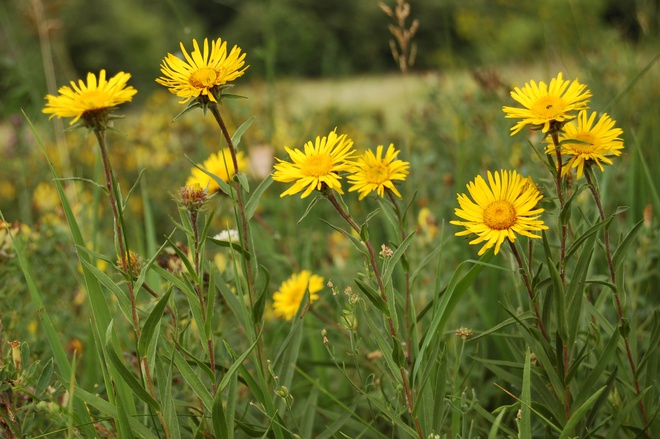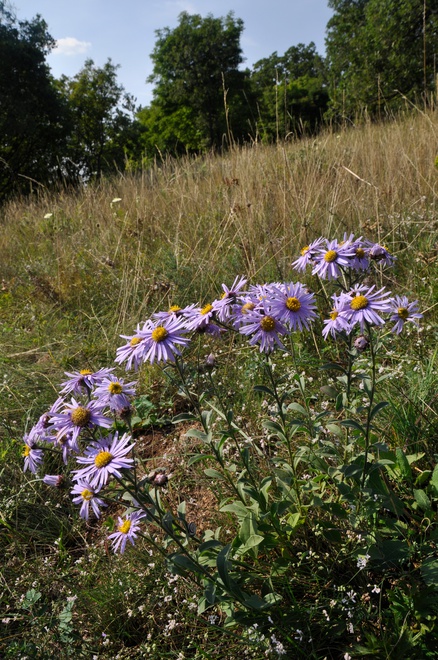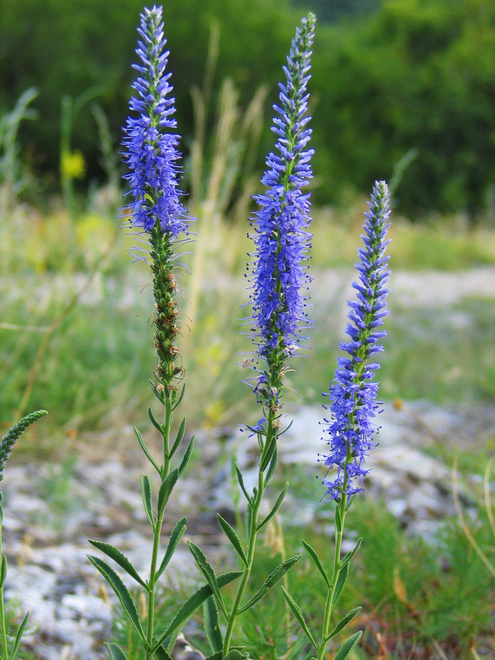Kostolianske lúky
The Kostoľany Meadows represent the most valuable of the xerotherm meadow pastures that have been preserved in the Kostoľany Basin. They display an extraordinary wealth of plant species and are an important site with orchidaceaes. Their development and history is linked to pasturing, which is attested by maps from the 19th century, which show pastures in this area. The whole site is rather small-scale with an overall extent of 4.2 ha. It is situated north-east of the municipality on a forest border, in the vicinity of uncultivated orchards and vineyards.
From station No. 15 we follow the yellow marking (8135) on a field road, along a curve to the border of the forest, from where we get on a steeper way north-eastwards through a former orchard. In the highest part with an overgrown meadow (the markings are mounted on iron posts), the marked trail leads into an oak forest. Station No. 16 is to be found on the first crossing of the forest trails.
Time: 12 min., opposite direction 10 min., length: 0.8 km, medium demanding.
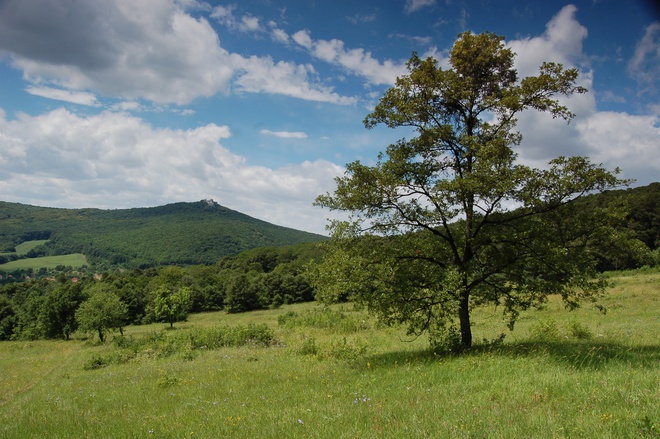
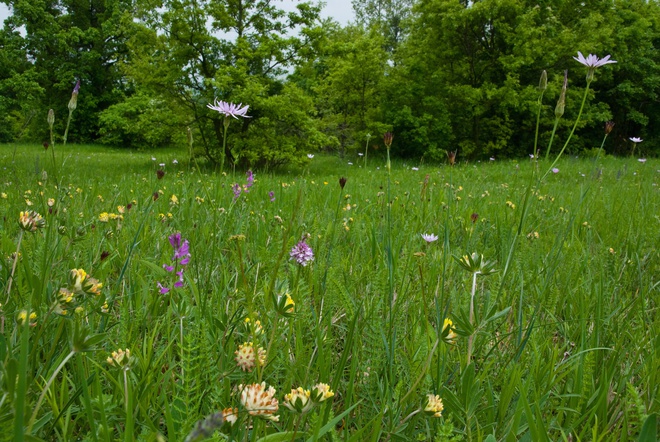
In 2000 the site was declared a nature reserve in the category ‘protected area’, it was one of four sites in the Tribeč Mountains that were proposed to form part of the European network of NATURA 2000 sites for its uniqueness. The subsoil is composed of limestone rocks and therefore especially calcicole plants occur here. The dominant plant is a grass, the heath false brome (Brachypodium pinnatum). The Kostoľany Meadows are covered with blossoms in the spring. Outstanding among the orchids is especially the lady orchid (Orchis purpurea), the three-toothed orchid (Orchis tridentata) and as well the green-winged orchid (Orchis morio), less striking is the burnt orchid (Orchis ustulata).
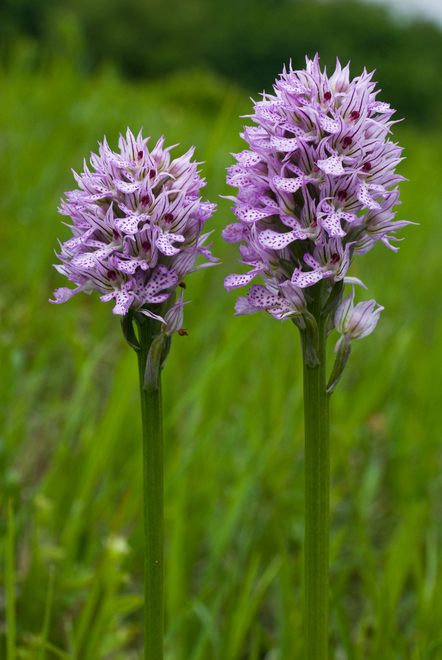
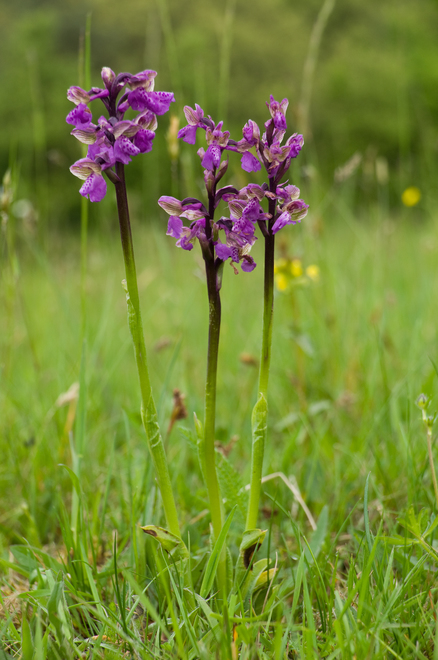
May the colourfulness of the meadows is added by the great milkwort (Polygala major), Scorzonera purpurea, wood anemone (Anemone sylvestris), common kidneyvetch (Anthyllis vulneraria), clustered bellflower (Campanula glomerata). At the beginning of summer, the rare Anatolian flax (Linum hirsutum) blooms, which is within the whole of Tribeč to be found only on the Kostoľany Meadows.
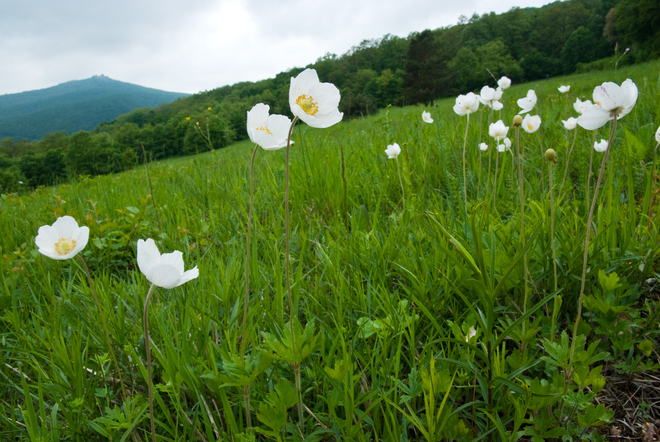
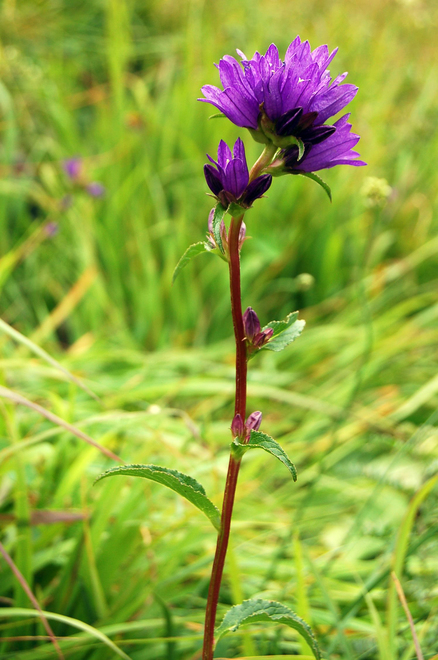
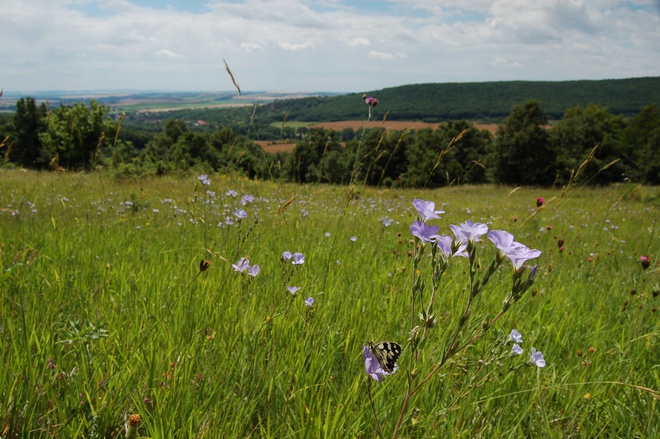
In summer there is again a lot to admire; Blooming are: goldilocks aster (Crinitina linosyris), European Michaelmas daisy (Aster amelloides), the spider plant (Anthericum ramosum), sword-leaved inula (Inula ensifolia) or spiked speedwell (Pseudolysimachion spicatum).
